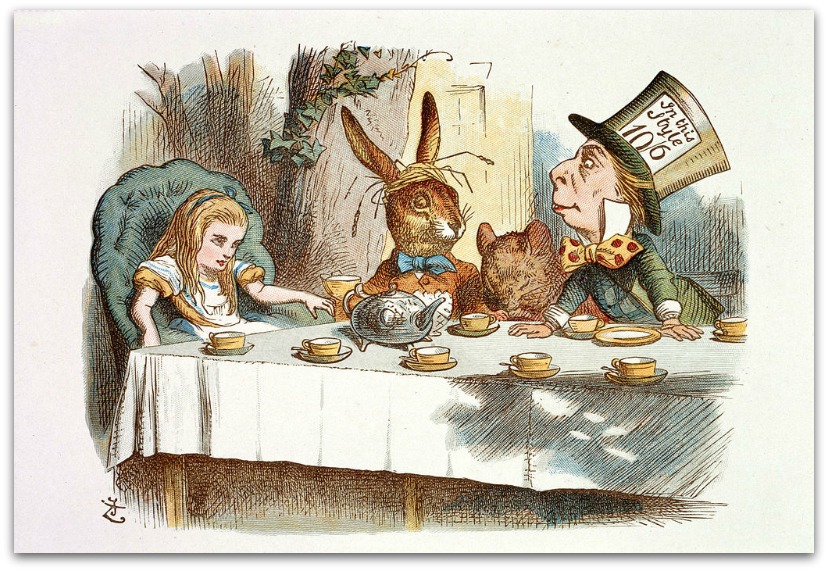The beloved children’s novel is celebrating its 150th birthday this year. Or is next year its “unbirthday”?
1. It was written by Lewis Carroll, the pen name of Charles Lutwidge Dodgson. Dodgson conceived the premise during a leisurely boat trip in July 1862 that was attended by a colleague’s three daughters. He later wrote the tale down and gave it to one of them as a gift for Christmas in 1864. The girl’s name? Alice.

3. The initial press run was only 2,000 copies but the book quickly became a literary sensation in the U.K.; Queen Victoria and Oscar Wilde were among its earliest readers. Since then, Alice’s Adventures in Wonderland has never been out of print. More than 100 editions have been printed in English, and it’s been translated into 174 languages.
4. Fans and literary scholars alike have attempted to decode all of the hidden jokes and references that Dodgson squeezed in. Dodgson characterized himself as the Dodo, who, like him stuttered whenever he spoke. Bill the Lizard, meanwhile, was supposedly a reference to then British Prime Minister, Benjamin Disraeli. Many speculate that the Mad Hatter was inspired by Theophilus Carter, a cantankerous furniture dealer from Oxford that loved to wear top hats. It also allegedly contains numerous barbs directed at mathematicians.
5. Alice in Wonderland Syndrome (or “AIWS” for short) was pinpointed by British psychiatrist John Todd in 1955. It sometimes impacts those suffering from migraine headaches and causes them to perceive nearby objects as smaller, bigger, or further away than they actually are.








